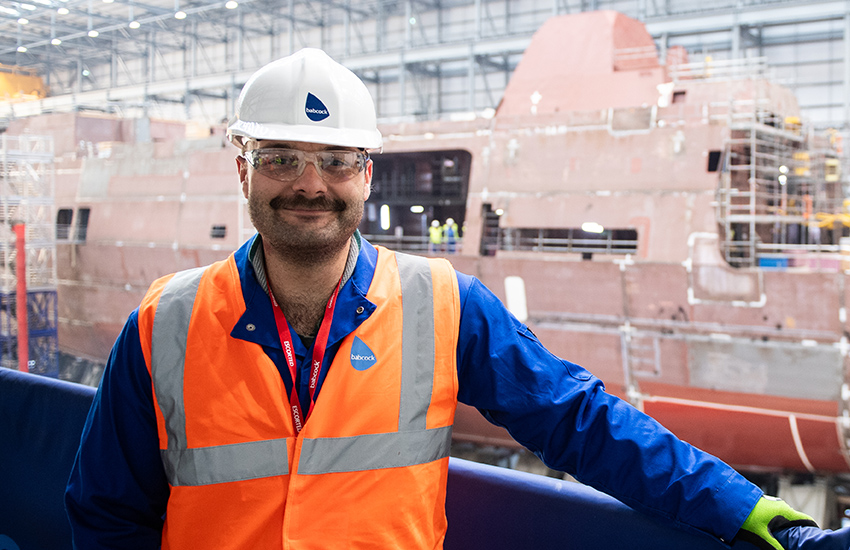Momentum Media's Defence and defence industry brand, Defence Connect, visited some of Britain’s most important maritime shipyards to gain firsthand insight into how Australia can maintain a nuclear-powered submarine fleet and enhance domestic shipbuilding.

Liam Garman, editor of Defence Connect.
During the trip, Liam Garman, editor of Defence Connect, engaged with industry stakeholders to understand how the Australian Defence Force can safely manage its transition to a nuclear-powered submarine future.
The Commonwealth has billed the acquisition as “the single biggest investment in our defence capability in our history” despite concerns from green groups that AUKUS will further increase tensions and damage ecosystems.
Speaking to reporters at HMNB Devonport, a Babcock spokesperson poured cold water on the concerns stating that stringent government regulation and corporate expertise in nuclear sustainment makes AUKUS Pillar I a safe and achievable objective for Australia.
“During the initial consultation process the MOD (Ministry of Defence) ran, even Greenpeace said, ‘Look, we don’t just understand why you don’t just get on with this, we know it’s safe’,” Babcock chief corporate affairs officer John Howie told reporters.
The comments come as Australia continues to identify the best way forward for the development of a domestic nuclear-powered submarine industry. Under the current proposal, Australia will acquire three Virginia Class SSNs, with the option to acquire an additional two units before transitioning to the SSN-AUKUS.
Australia and the United Kingdom are expected to commence construction of the SSN-AUKUS by the end of the 2020s.
However, concerns have mounted in recent weeks with data indicating that the production of Virginia Class submarines has declined to fewer than two per year. The drop suggests that Australia will be two to three years late in receiving their first Virginia Class submarine from the United States.
“Visiting HMNB Devonport was eye-opening,” Garman explained.
“Our allies in the United States and United Kingdom have been maintaining nuclear-powered submarines for over six decades.
“We truly have the opportunity to grasp tried and tested technological innovations to ensure Australia’s safety and prosperity.”
Garman also visited Rosyth Dockyard, the home of the Royal Navy’s future Arrowhead Type 31 frigate and one of the United Kingdom’s nuclear submarine decommissioning sites. Both are Babcock-led projects.
While at Rosyth, Babcock spokesperson Natasha Allan, head of sustainability (marine), told journalists how the company was able to maintain the delivery of frigates for the Royal Navy despite continued workforce constraints biting industry.
One of the solutions was the development of the Production Support Operative (PSO) pathway, a new career program for non-skilled or partially skilled workers.
PSO candidates are first assessed on characteristics such as attitude and teamwork rather than qualifications, broadening the company’s potential talent pool.
The global shipbuilder then provides training and certifications to successful candidates, upskilling and enabling them to work with qualified tradespeople on shipbuilding and decommissioning programs.
“What we looked at is how we can best utilise our tradespersons,” Allan explained.
“Even if it’s preparing areas, preparing tooling and equipment or supporting work permits. It’s a general tasking that’s not requiring an apprenticeship.”
Garman visited the shipyards with the Babcock Group.